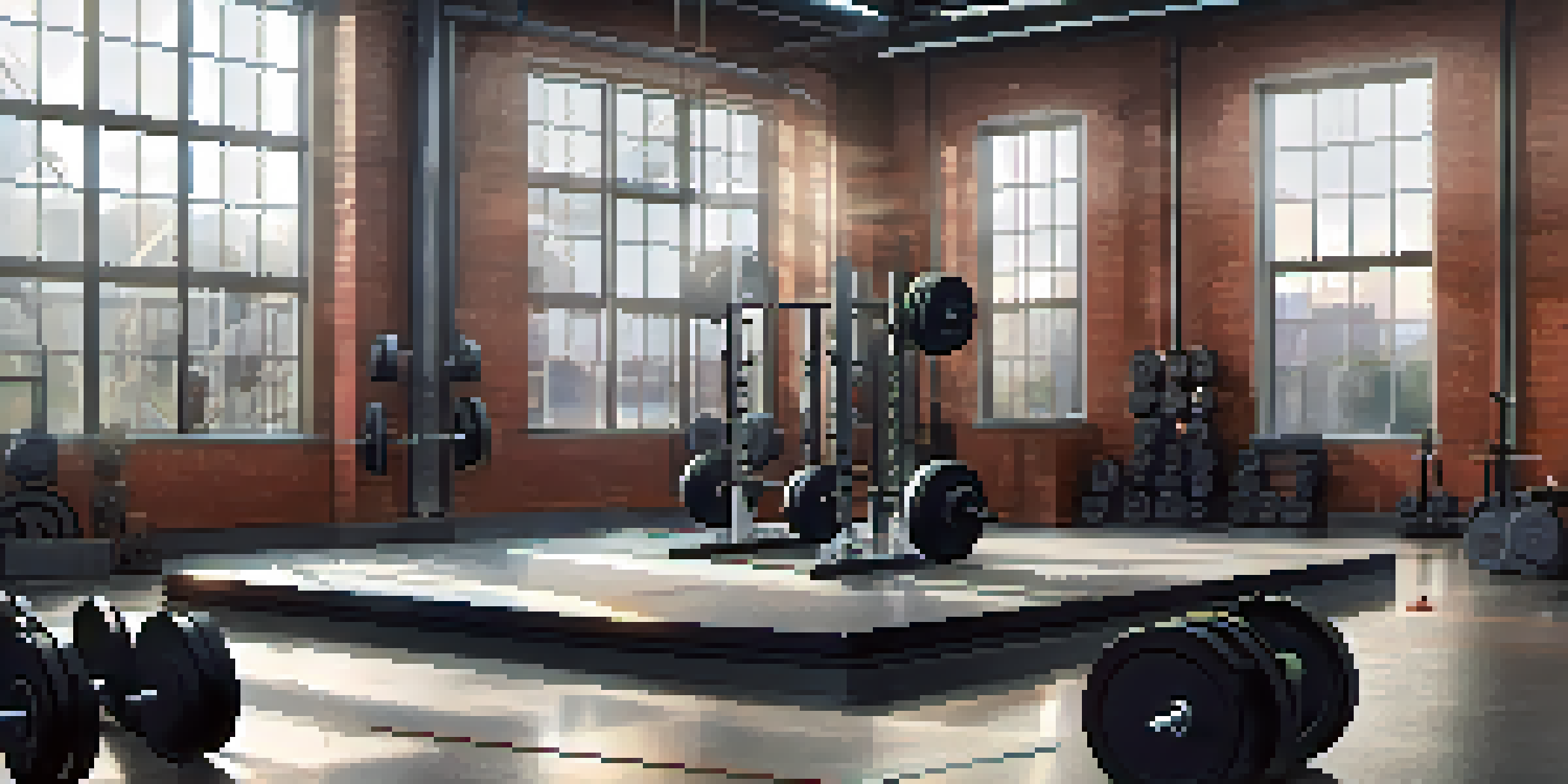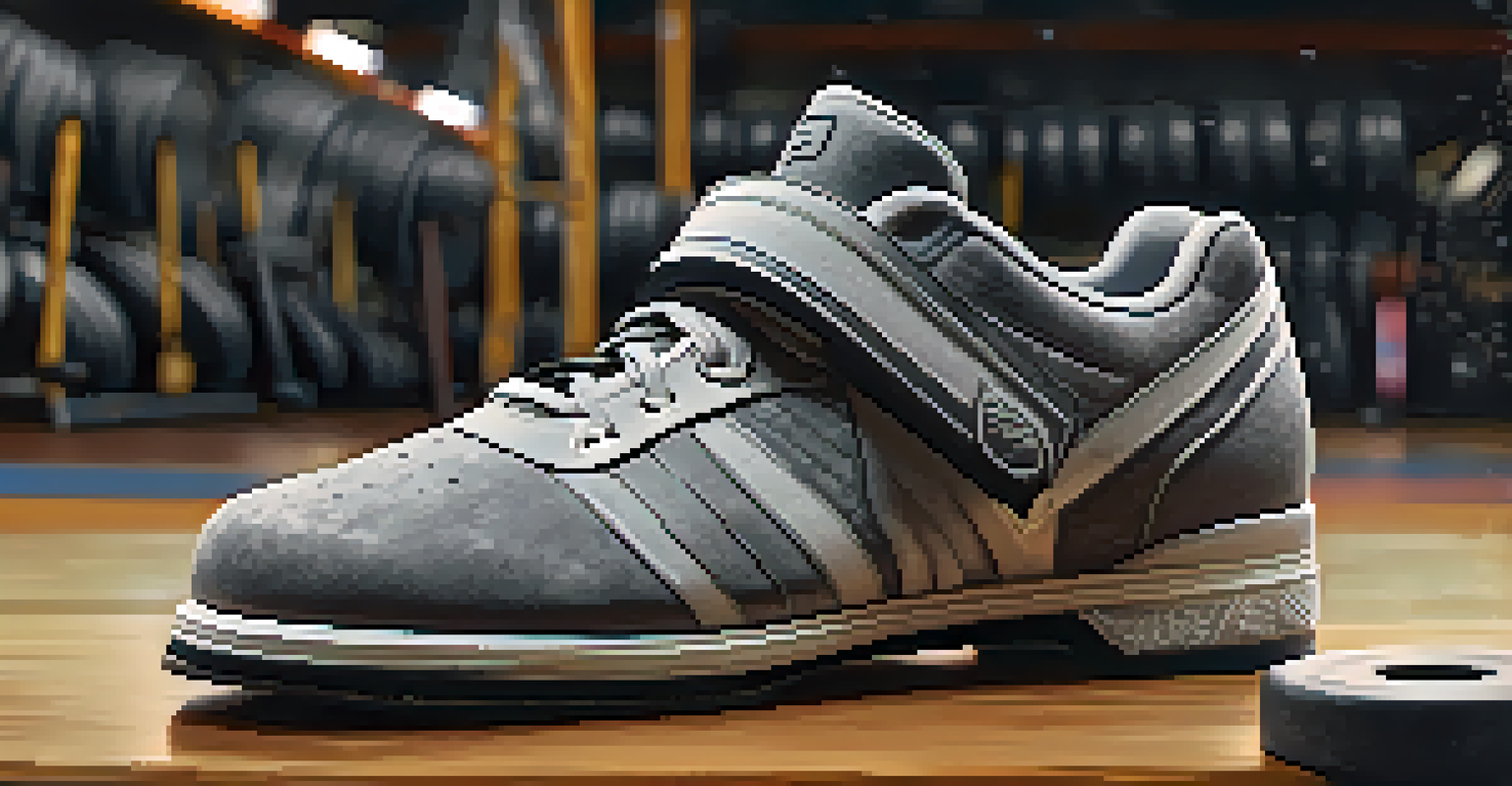Understanding Powerlifting Equipment: A Comprehensive Overview

What is Powerlifting and Its Equipment Essentials
Powerlifting is a strength sport that focuses on three main lifts: the squat, bench press, and deadlift. Each of these lifts requires specific equipment to enhance performance and ensure safety during training and competitions. Understanding the essential gear can help lifters make informed choices to improve their lifts and overall experience.
Strength does not come from physical capacity. It comes from an indomitable will.
The primary equipment includes a barbell, weight plates, and a lifting platform. While these are the basics, lifters often use additional gear like squat racks and benches to facilitate their workouts. Each piece of equipment plays a vital role in supporting the lifter's technique and maximizing their strength potential.
As you delve deeper into powerlifting, you'll find that specialized gear like lifting belts, shoes, and supportive suits can further enhance performance. This article will explore each type of equipment in detail, helping you understand their purposes and benefits as you embark on your powerlifting journey.
The Role of Barbells in Powerlifting Success
The barbell is the cornerstone of powerlifting, crucial for performing all three lifts. Standard barbells weigh 20 kilograms (44 pounds) for men and 15 kilograms (33 pounds) for women. They come in various designs, including Olympic bars, which are ideal for competitive lifting due to their durability and consistent specifications.

When choosing a barbell, consider factors such as grip diameter, knurling (the textured part for grip), and whip (the bar's flex under load). These features can significantly impact your lifting experience and performance. For instance, a bar with aggressive knurling can provide a better grip, especially when lifting heavy weights.
Key Equipment for Powerlifting
Understanding essential gear like barbells, weight plates, and lifting belts is crucial for enhancing performance and safety in powerlifting.
Additionally, there are specialty bars designed for specific lifts, such as the squat bar or deadlift bar. Each type of barbell can influence your lifting technique and muscle engagement, making it essential to choose the right one based on your goals and preferences in powerlifting.
Understanding Weight Plates: Types and Uses
Weight plates are another fundamental element of powerlifting equipment, allowing you to customize the load for your lifts. These plates come in various materials, including rubber, steel, and bumper plates, each serving different purposes. For example, bumper plates are ideal for Olympic lifts because they can be dropped without damaging the floor or the plates themselves.
The only way to prove you are a good sport is to lose.
There are also fractional plates, which are smaller increments that help lifters progress gradually in their training. This is especially beneficial for those new to powerlifting or working through plateaus. By using fractional plates, you can make smaller adjustments to your weights, allowing for steady progress without overwhelming your body.
Understanding the different types of weight plates and their uses can help you effectively tailor your workouts. Whether you're lifting heavy or focusing on technique, having the right plates can make a significant difference in your training outcomes.
The Importance of Lifting Belts for Stability
A lifting belt is a common accessory in powerlifting that provides support to the lower back during heavy lifts. By increasing intra-abdominal pressure, a belt helps stabilize the spine and reduce the risk of injury. However, it's essential to use the belt correctly and not rely on it solely for support; good technique should always be your priority.
Belts come in various widths and materials, each offering different levels of support and comfort. For instance, a thicker belt may provide more stability, while a thinner one could be more comfortable for lighter lifts. It’s important to choose one that suits your lifting style and needs.
Importance of Proper Footwear
Choosing the right powerlifting shoes can significantly improve stability and performance during lifts.
Using a lifting belt can enhance your lifting performance, particularly during squats and deadlifts. By understanding how to incorporate a belt into your routine effectively, you can maximize your strength while minimizing the risk of injury.
Choosing the Right Powerlifting Shoes
Footwear is a crucial yet often overlooked aspect of powerlifting. The right shoes provide stability, grip, and support during lifts, which can impact your performance. Powerlifting shoes typically have a raised heel, allowing for better squat mechanics and promoting an upright torso during lifts.
There are various types of powerlifting shoes, from those designed specifically for squatting to cross-training options that can accommodate multiple lifts. Selecting shoes with a non-slip sole is essential, as it helps maintain traction and balance during heavy lifts.
Investing in a good pair of powerlifting shoes can make a noticeable difference in your training. By providing the necessary support and stability, they can help you lift more effectively and safely.
Supportive Gear: Singlets and Knee Sleeves
In addition to belts and shoes, powerlifters often wear supportive gear like singlets and knee sleeves for added comfort and performance. A singlet is a one-piece garment worn during competitions, designed to allow judges to see the lifter's range of motion clearly. While it may seem simple, it plays an important role in ensuring compliance with competition rules.
Knee sleeves, on the other hand, provide compression and warmth to the knee joint, which can enhance stability and reduce the risk of injury. They are particularly useful during squats and deadlifts, where the knees undergo significant stress. Choosing the right knee sleeves involves considering factors like thickness and compression level.
The Role of Accessories
Using accessories like chalk and lifting straps can enhance grip and support, helping lifters achieve their goals more effectively.
By understanding the benefits of supportive gear, you can make informed choices that enhance your lifting experience. Wearing the right equipment can boost your confidence and performance, ultimately leading to better results in your powerlifting journey.
Accessories: Chalk, Straps, and More
Accessories like chalk and lifting straps may seem minor, but they can significantly impact your performance. Chalk helps improve grip by reducing moisture on your hands, which is particularly beneficial during heavy lifts. A solid grip is essential for maximizing your lift and preventing accidents.
Lifting straps can also enhance grip strength, especially during deadlifts or when performing high-rep movements. They allow you to focus on your lifting technique without worrying about your grip giving out. However, it's important to use them judiciously to ensure you continue to develop your grip strength.

Incorporating these accessories into your training can make a world of difference. While they are not mandatory, they can help you push through tough workouts and achieve your lifting goals.